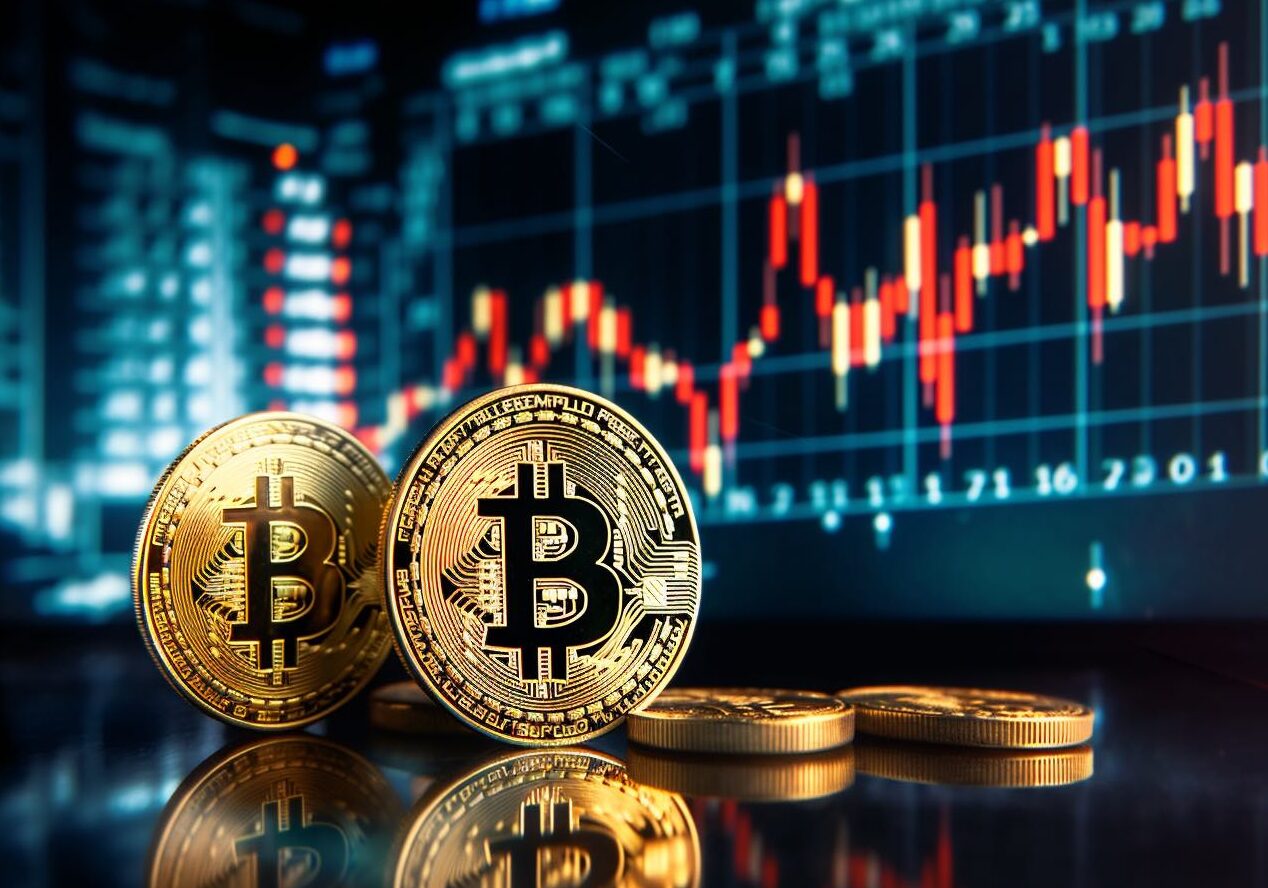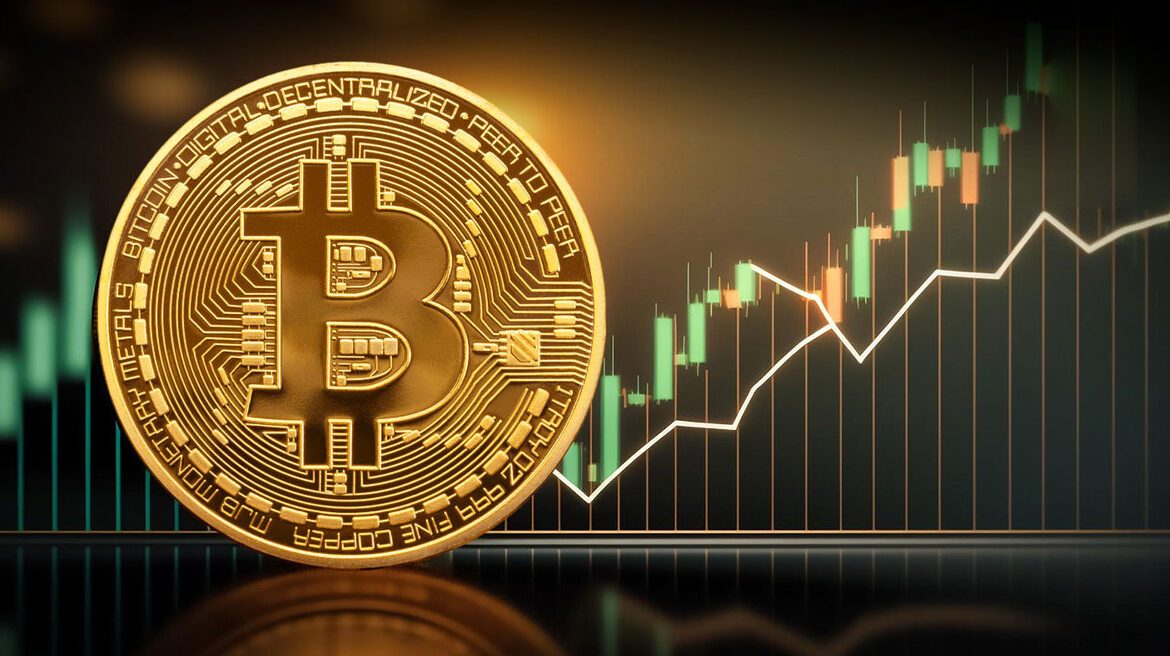The price of Bitcoin is at the center of the cryptocurrency world, drawing in investors, traders, and tech fans alike. Satoshi Nakamoto, a pseudonymous person, created Bitcoin in 2009. Since then, it has become the most well-known and valued digital currency. Its price changes are often big and are affected by many different things, like market demand and supply limits, news about regulations, and new technologies. If you want to invest in, develop, or just follow cryptocurrencies, you need to know what makes Bitcoin’s price go up and down.
The history of Bitcoin’s price is a fascinating story of quick development and change. Bitcoin was almost worthless; early transactions were just a few cents. Bitcoin first broke $1,000 in 2013. This event indicated that more people were seeing its digital asset potential. \ After this first surge, boom-and-bust cycles followed. Bitcoin nearly reached $20,000 during the 2017 bull run, which was astounding. Retail investors, media coverage, and the massive expansion of Initial Coin Offerings (ICOs), which added new projects and tokens to the blockchain ecosystem, drove that rally.
The bubble burst in 2018, causing prices to fall for a long time and driving investors away. Bitcoin slowly regained market share in subsequent years. In 2020 and 2021, Bitcoin’s price rose above $60,000 due to more institutions, global economic concerns, and inflation fears. Two famous people, MicroStrategy CEO Michael Saylor and Tesla CEO Elon Musk, helped popularize Bitcoin in finance. Many envisioned Bitcoin as “digital gold,” a method to retain money that would protect against the devaluation of fiat currency.
The protocol limits the number of bitcoins to 21 million, ensuring their rarity. Governments can manufacture as much fiat money as they want, but Bitcoin’s fixed supply is like gold and other valuable commodities. Every four years or so, there are “halving” events that lower the block reward miners get. These occurrences make the shortage even worse. Historically, these halvings have caused the price of Bitcoin to go up a lot because the supply is tighter than the demand.
Institutional Demand Driving Bitcoin
Demand is a big part of what makes Bitcoin’s price go up and down. In the last few years, institutional investors have become important players in the market. Hedge funds, family offices, and publicly traded firms have bought a lot of Bitcoin, which gives the asset respectability and helps it stay stable.

Grayscale Bitcoin Trust and Bitcoin futures on the Chicago Mercantile Exchange (CME) are two examples of platforms that have made it possible for institutional investors to get Bitcoin exposure through regulated financial products. In the past, ordinary investors made up most of the market, but now institutional investors are coming in. When institutions make something legitimate, it often draws more investors, which drives prices up.
Regulatory Impact on Bitcoin Price
News about regulations has a big effect on the price of Bitcoin. Governments throughout the world are still trying to figure out how to regulate cryptocurrencies. Announcements about bans, limits, or new rules often cause prices to change quickly. For example, China’s recent crackdowns on Bitcoin mining and trading caused prices to drop sharply, while the acceptance of Bitcoin Exchange-Traded Funds (ETFs) in places like Canada and the US usually makes investors feel more confident. When rules are clear, there is less confusion, which draws in more cautious investors who were previously hesitant because they weren’t sure what the law said. On the other hand, stringent rules can make it harder to get into the market and make people less excited.
People often consider Bitcoin to be a way to protect themselves from inflation and economic instability, especially when central banks are using aggressive monetary policy. Quantitative easing and stimulus programs add money to traditional markets, which makes some investors look for assets like Bitcoin to protect their buying power. Geopolitical tensions, currency devaluations, and issues in traditional financial systems have also contributed to surges in Bitcoin demand. The COVID-19 outbreak made this very clear. At first, the price of Bitcoin dropped, but it swiftly rose again as investors sought other options in an uncertain economy.
Market Sentiment and Media Influence
Market sentiment, which is often shaped by news coverage and social media conversations, often causes short-term price changes. Tweets from notable people like Elon Musk have been known to make Bitcoin’s price go up or down rapidly. Also, crypto-focused news sites like CoinDesk and powerful online communities help shape the story that affects how investors act. Because Bitcoin is decentralized and digital, it is quite sensitive to variations in mood. FOMO (fear of missing out) and FUD (fear, uncertainty, doubt) events can cause prices to shift quickly.

Analyzing Bitcoin Price Movements
To understand how Bitcoin prices change over time, you need to use both technical and fundamental analysis. Traders commonly use technical indicators like moving averages, volume analysis, and momentum oscillators to find good times to buy and sell. Fundamental analysis, on the other hand, looks at on-chain data like transaction volume, active addresses, and miner activity to figure out how healthy the Bitcoin network is at its core. New techniques for sentiment analysis use natural language processing (NLP) to measure how people feel on social media and guess how the market will react. Blockchain analytics platforms like Glassnode and Chainalysis also give information about wallet flows and exchange deposits, which can help you figure out where prices might go.
Final thoughts
It’s still hard to predict Bitcoin’s price, but many experts think it will go up in the long run. Bitcoin’s usefulness and potential for widespread use are increased by improvements to its underlying technology, including the Lightning Network, which makes transactions faster and cheaper. As regulatory frameworks get better, institutional interest is likely to expand. Meanwhile, Bitcoin’s growing acceptance in global payment networks and its expanding usage as a store of value in emerging economies with unstable currencies may keep demand high.







